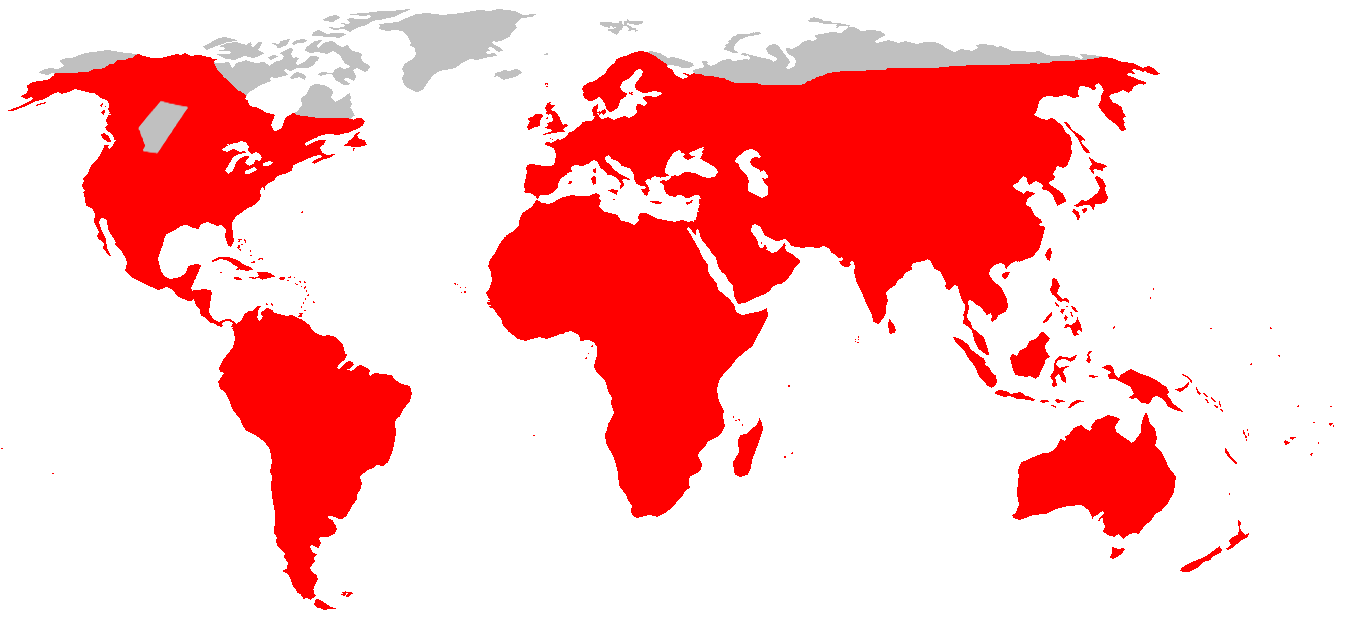Alberta’s War on Rats

1950’s poster commissioned by the Government of Alberta to drive public support for a War on Rats. (Photo: Provincial Archives of Alberta)
The Canadian province of Alberta makes a claim that is so sweeping, so mind-bending that it basically redefines “big, if true.”
According to the Alberta Ministry of Agriculture and Forestry, the province has been free of rats for more than 60 years. But how is it that an entire Canadian province, of over 250,000 square miles and more than four million citizens, could have absolutely no rats?
“Alberta’s rat free designation means that we have zero tolerance for rats–there is no permanent population,” says Bruce Hamblin, a rat inspector there. “We haven’t allowed them to establish themselves.” Translation: the rat free status does not actually mean that there are no rats in the province, it just means they’ve been given notice.
The Alberta government officially declared a “War on Rats” in 1950, and has been fighting a protracted battle ever since. The province has a dedicated team of “Rat Patrollers” who are sent out to deal with rodent problems, and just this year a rat hotline was set up for citizens to report potential infestations. The hotline, which is reached by dialing 310-(RATS), is manned seven days a week by Mr. Hamblin, a former Mountie, and his associates.
Integral to the rat free mission is a 373-mile-long “Rat Control Zone” on the eastern border of Alberta with Saskatchewan. The rat patrollers check residences in this zone, which is over 18 miles wide, at least twice a year, along with granaries, feed stacks, and abandoned barns–any place rats can be found.
 A Norway Rat. It may look cute, but to Albertans, it’s a sign of a pending infestation. (Photo: Reg Mckenna/Flickr)
A Norway Rat. It may look cute, but to Albertans, it’s a sign of a pending infestation. (Photo: Reg Mckenna/Flickr)
Ignorant of political borders, rats generally gain access to the province as hitchhikers. Most of the rats come from the east, on farm equipment or in camper vans coming in from Saskatchewan and British Columbia, which have less strict rules around pest management.
After the recent incursion in Medicine Hat, a city in southern Alberta, the Ministry of Agriculture set up the rat hotline in January. The callers are asked to provide a picture of the suspect rodent. Experts in the office identify whether or not it is a problem rat by telltale visual cues, like the ears, tail, feet, or face.
Then, either the rat patrol is dispatched, or the municipal government’s local pest control officer is notified. The workers don’t only arrive with bags and chemicals; sometimes there are tricks involved, too. For a plan called “Operation Haystack,” the rat patrollers dropped poisoned hay bales around fledging colonies.
As for what constitutes an infestation, Mr. Hamblin laughs. “Generally, anywhere there’s two or more rats is considered an infestation. But we’ve had one that was a whole family–a dad, mom and all the babies.”

The Rat Control Zone patrolled at least twice a year. (Photo: Alberta Ministry of Agriculture)
One of the major challenges with the hotline is misidentification. “It’s funny,” says Mr. Hamblin, “most Albertans have never even seen a rat, and that’s a good thing. We mostly have cases of people reporting gophers, or muskrats, who are native to Alberta and not much of a problem.”
The province’s staunch refusal to be overrun by rogue rodents was inspired by one particularly threatening rat, back in 1950. Albertans were afraid of the Norway rat, a remarkably resilient pest that is thought to have spread the bubonic plague throughout Europe. Efficient reproducers, Norway rats have established themselves throughout the world, piggy-backing off of humans, eating garbage, and making nests in the darker corners of homes.
Out of the 300 sightings reported to the rat patrol in a year, Mr. Hamblin admits, “we only get about 16 confirmed rat sightings per year, and about two or three infestations. But 98 percent of the time we get calls, it’s not actually a rat.”
“We even had one lady earlier this year who called to tell us that she had found an extremely large rat in her basement. It turned out to be a small beaver.”

The global distribution of the Norway Rat. Notice Alberta - the rat free province. (Photo: WikiCommons CC BY SA 3.0)



Follow us on Twitter to get the latest on the world's hidden wonders.
Like us on Facebook to get the latest on the world's hidden wonders.
Follow us on Twitter Like us on Facebook